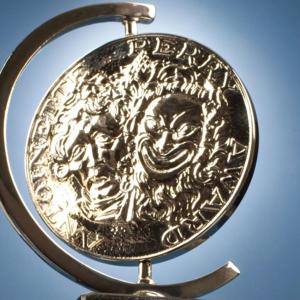What was it like to dance for Aaron Copland?
Martha Graham Artistic Director and Interlochen alumna Janet Eilber shares her memories of a revolutionary artist.
From the moment her parents moved their family to a new school called Interlochen to become members of its founding faculty, alumna Janet Eilber’s life has been infused with the arts and an understanding of the powerful joy that comes from artistic expression.
She returned to campus as artistic director of the Martha Graham Dance Company, leading the troupe in a celebration of one of America’s most influential composers. “Aaron Copland: The World of an Uncommon Man” brings together a roster of performers that includes the Emerson String Quartet, soprano Christine Brewer, violinist James Ehnes, and the Martha Graham Dance Company. Highlighting Copland’s role in the creation of “the American sound,” the festival also celebrates the composer’s influential visits to Interlochen in 1967 and 1970.
As a young dancer at Interlochen, Eilber was one of a group of students who took to the stage for Copland, performing his piece, Dance Panels. “He was such a soft-spoken gentleman,” Eilber recalls. “So complimentary and supportive of the young people at Interlochen.”
Eilber would meet Copland again as a professional dancer and member of the Martha Graham Dance Company, when he would conduct for the group and meet with its legendary founder. “To say he was soft-spoken is not to say he was not strong,” says Eilber. “He and Martha embodied a revolution in art. They invented the American art form.”
As such, he was a towering figure, changing the course of American performing arts alongside Graham. “He didn’t have to assert his strength,” says Eilber. “His beliefs held such rigor. They were undeniable.”
Eilber almost missed out on this front-row seat to arts history. Facing graduation from Interlochen, she had decided against applying to any East Coast schools, thinking instead that she would remain closer to home. Such was her skill, though, that Interlochen’s then-President Karl Haas arranged an audition with Martha Graham for Eilber. Her solo earned accolades from Graham, who offered her a spot in her advanced class but also encouraged her to consider Juilliard, a school with which Eilber quickly fell in love.
By her senior year at Juilliard, Eilber was a member of the Martha Graham Dance Company and was soon touring the world, performing in costumes designed by Halston, rehearsing in studios frequented by the likes not only of Copland but also of Alexander Calder, Truman Capote, and other artistic luminaries, bursting with creativity and at the height of their artistic powers.
“The 1970s were a rebirth for Martha,” says Eilber, who performed the whole of Graham’s oeuvre, from the powerful early works to new choreography, all establishing Graham firmly and intractably as one of the pre-eminent, transformational figures in dance.
After retiring as a dancer, Eilber continued to work with the Martha Graham Dance Company, handling business and archival duties and putting her Interlochen education to good use. Soon, the board asked Eilber to take over the entire organization as its artistic director.
“It was a dark time for the company,” says Eilber. “No one had strategized what the organization would be without Martha and how to move the legacy forward to sustain it. All of my creative training from Interlochen came back.”
The key to rejuvenating the company and bringing it back from the fiscal and creative edge rested in giving the works both artistic and historic context. “We look at it in terms of inspiring new works, using media to present existing works in new ways and we look at how other art forms keep things fresh,” Eilber says. “We feel our audiences are growing. People are seeing Graham with fresh eyes and understanding her fundamental work in American art. It’s deeply satisfying to see Martha rediscovered by new audiences.”
For example, they do a spoken introduction for all performances—a kind of contextual programming that will be on full display when the company returns to Interlochen for the Copland festival. “We’ll be doing a narrated introduction called ‘A Sense of Place’ for the performance of Appalachian Spring,” says Eilber. The introduction will comprise quotes from Graham and Copland, extracted from conversations during the creation of this seminal work. The narration will be scored with pieces and elements from early Copland works.
The second half of the performance will include Martha Graham’s Errand Into the Maze from 1947 and a new piece called Echo that premiered in 2014. Although both pieces have a very different physical style, they both are born from Greek myth and underscore the idea that similar source material can culminate in complementary yet original work.
For Eilber, the Copland Festival is not only a wonderful opportunity to return to a place that has meant so much to her—as an alumna, a former instructor and a past board member—but also a chance to help celebrate an American original. “In having a variety of events and points of access to the Copland legacy, audiences can understand what a giant he is. Not by being lectured to but by experiencing the music, experiencing the dance—it allows the Copland legacy to resonate for new audiences.”







